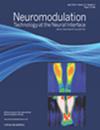Neuromodulation and Disorders of Consciousness: Systematic Review and Pathophysiology
IF 3.2
3区 医学
Q2 CLINICAL NEUROLOGY
引用次数: 0
Abstract
Introduction
Disorders of consciousness (DoC) represent a range of clinical states, affect hundreds of thousands of people in the United States, and have relatively poor outcomes. With few effective pharmacotherapies, neuromodulation has been investigated as an alternative for treating DoC. To summarize the available evidence, a systematic review of studies using various forms of neuromodulation to treat DoC was conducted.
Materials and Methods
Adhering to the PRISMA (Preferred Reporting Items for Systematic Reviews and Meta-Analyses) guidelines for systematic literature review, the PubMed, Scopus, and Web of Science databases were queried to identify articles published between 1990 and 2023 in which neuromodulation was used, usually in conjunction with pharmacologic intervention, to treat or reverse DoC in humans and animals. Records were excluded if DoC (eg, unresponsive wakefulness syndrome, minimally conscious state, etc) were not the primary clinical target.
Results
A total of 69 studies (58 human, 11 animal) met the inclusion criteria for the systematic review, resulting in over 1000 patients and 150 animals studied in total. Most human studies investigated deep brain stimulation (n = 15), usually of the central thalamus, and transcranial magnetic stimulation (n = 18). Transcranial direct-current stimulation (n = 15) and spinal cord stimulation (n = 6) of the dorsal column also were represented. A few studies investigated low-intensity focused ultrasound (n = 2) and median nerve stimulation (n = 2). Animal studies included primate and murine models, with nine studies involving deep brain stimulation, one using ultrasound, and one using transcranial magnetic stimulation.
Discussion
While clinical outcomes were mixed and possibly confounded by natural recovery or pharmacologic interventions, deep brain stimulation appeared to facilitate greater improvements in DoC than other modalities. However, repetitive transcranial magnetic stimulation also demonstrated clinical potential with much lower invasiveness.
神经调节与意识障碍:系统回顾与病理生理学》。
导言:意识障碍(DoC)代表了一系列临床状态,影响着美国数十万人,而且治疗效果相对较差。由于有效的药物疗法很少,神经调节已被研究作为治疗意识障碍的替代疗法。为了总结现有证据,我们对使用各种形式的神经调控治疗 DoC 的研究进行了系统性回顾:根据系统性文献综述的 PRISMA(系统性综述和荟萃分析的首选报告项目)指南,查询了 PubMed、Scopus 和 Web of Science 数据库,以确定 1990 年至 2023 年间发表的文章,这些文章通常结合药物干预使用神经调控来治疗或逆转人类和动物的 DoC。如果DoC(如无反应清醒综合征、微意识状态等)不是主要的临床目标,则排除记录:共有 69 项研究(58 项人类研究,11 项动物研究)符合系统综述的纳入标准,共研究了 1000 多名患者和 150 多只动物。大多数人类研究调查了脑深部刺激(15 项),通常是丘脑中部刺激和经颅磁刺激(18 项)。此外,还有经颅直流电刺激(15 人)和脊髓背柱刺激(6 人)。少数研究调查了低强度聚焦超声(n = 2)和正中神经刺激(n = 2)。动物研究包括灵长类动物和小鼠模型,其中九项研究涉及脑深部刺激,一项使用超声波,一项使用经颅磁刺激:讨论:虽然临床结果参差不齐,并可能受到自然恢复或药物干预的影响,但与其他方式相比,深部脑刺激似乎更有助于改善DoC。然而,重复经颅磁刺激也显示出了临床潜力,而且侵入性更低。
本文章由计算机程序翻译,如有差异,请以英文原文为准。
求助全文
约1分钟内获得全文
求助全文
来源期刊

Neuromodulation
医学-临床神经学
CiteScore
6.40
自引率
3.60%
发文量
978
审稿时长
54 days
期刊介绍:
Neuromodulation: Technology at the Neural Interface is the preeminent journal in the area of neuromodulation, providing our readership with the state of the art clinical, translational, and basic science research in the field. For clinicians, engineers, scientists and members of the biotechnology industry alike, Neuromodulation provides timely and rigorously peer-reviewed articles on the technology, science, and clinical application of devices that interface with the nervous system to treat disease and improve function.
 求助内容:
求助内容: 应助结果提醒方式:
应助结果提醒方式:


